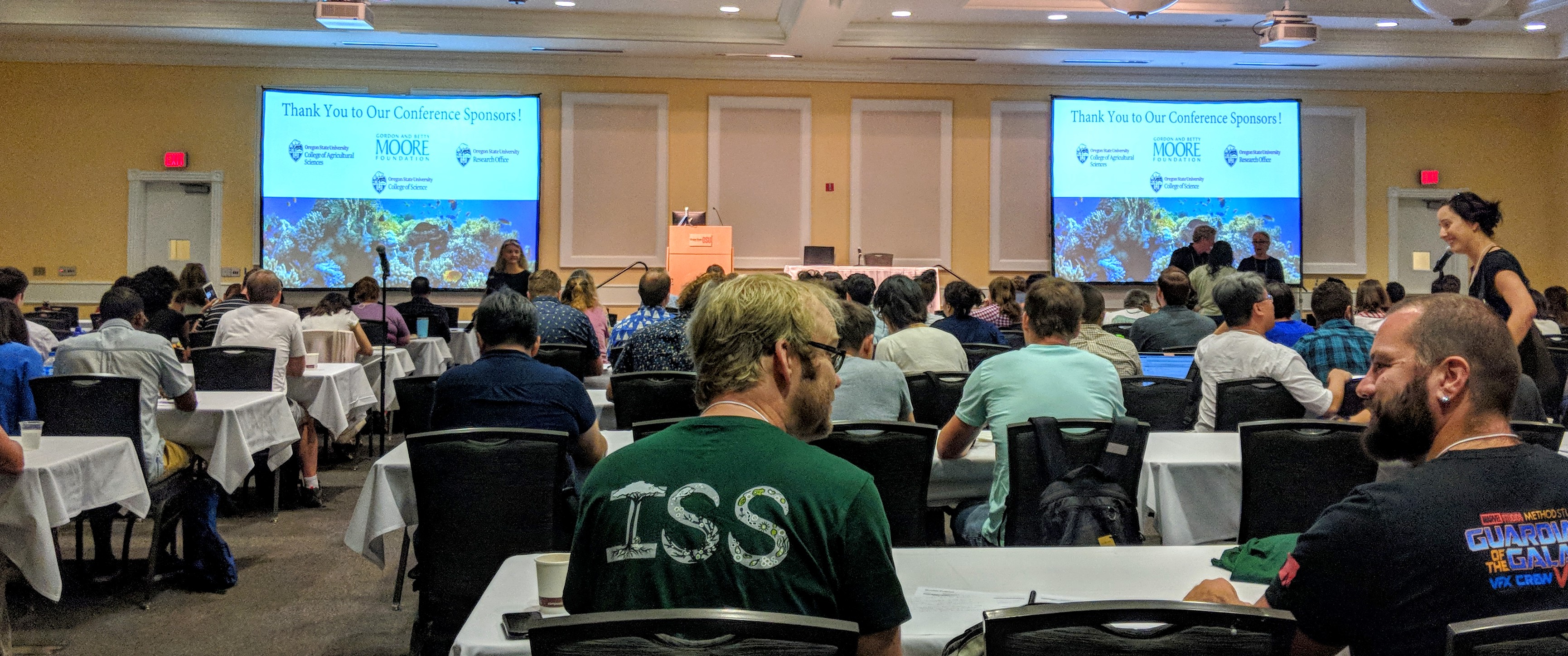New perspectives on symbiosis research

A team of KAUST Ph.D. students, postdoctoral fellows and professors recently attended the 9th International Symbiosis Society Congress in the U.S. in July. Photo by Hagen Gegner.
-By Hagen Gegner, KAUST Ph.D. student
KAUST Ph.D. student Hagen Gegner recently attended the 9th International Symbiosis Society Congress (ISS 2018) at Oregon State University in the U.S. Here, he shares his views on the pros and cons of presenting unpublished research at the event.
The 9th International Symbiosis Society Congress was held from July 15 to 20 in Corvallis, Oregon, U.S., and attracted researchers from various fields and specialties ranging from lichen to glowing squids to coral symbiosis. Several KAUST students, postdoctoral fellows and professors, including Ph.D. students Nils Rädecker, Maha Cziesielski and Guoxin Cui; postdoctoral fellows Claudia Pogoreutz and Anny Cardenas; and Professors Manuel Aranda and Christian Voolstra; and I attended the conference to present our work on corals and marine invertebrates and their microbial symbiotic partners.
Although I like presenting, I found this part of the conference challenging. My talk was based on already published work in which we showed that high salinity may play a role in the thermotolerance of corals and a follow-up to understand the underlying mechanism that I have been working on since then. The follow-up was the critical part--the unpublished part for which I had spent the past few months working on in the lab.

Scientists from all fields of symbiosis presented their work at Oregon State University during the 9th International Symbiosis Society Congress in the U.S. in July. File photo.
How should we scientists react? Should we be transparent and potentially expose sensitive research, or are we in it for the science, embracing our position to be able to talk to our peers?

A team of KAUST Ph.D. students, postdoctoral fellows and professors recently attended the 9th International Symbiosis Society Congress in the U.S. in July. File photo.
Based on the outcomes of the conference, I found I wanted to share my findings--I found it helpful to share knowledge and opinions; ask for advice; and interact with the people behind the journal publications. Ultimately, despite being in a competitive field, we cannot propel science if we stop collaborating and lock ourselves and our findings away.
Related stories:
-
Finding Nemo's genes
-
Saving the world's oceans
-
Reef corals have endured since the 'age of dinosaurs' and may survive global warming
- The internet of sea things
-
Exploring the Metaorganism Frontier

